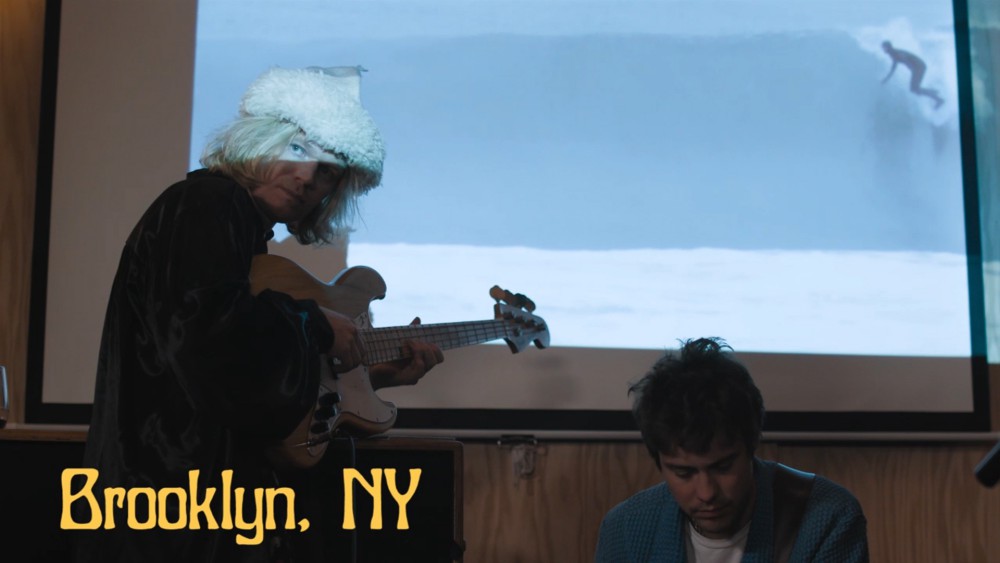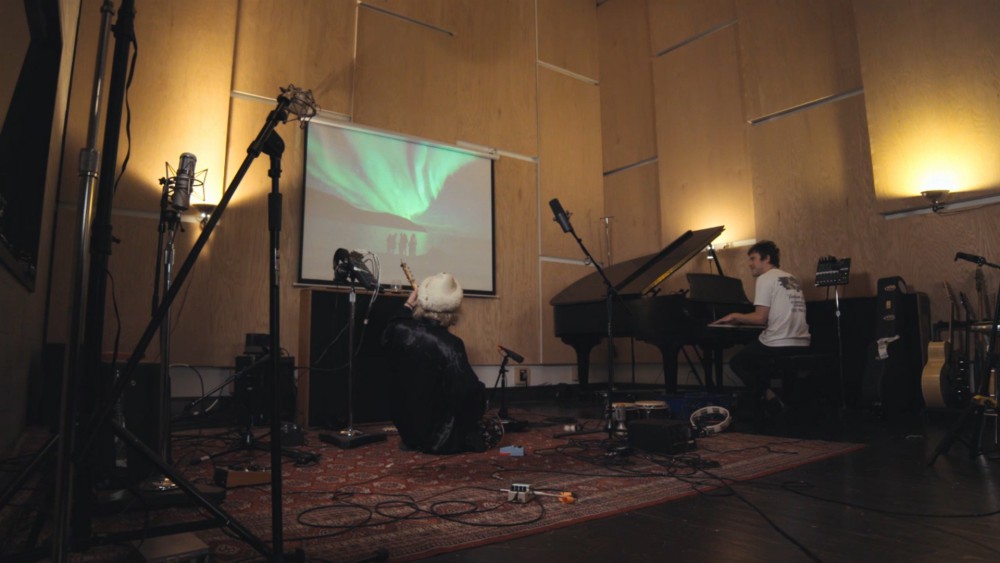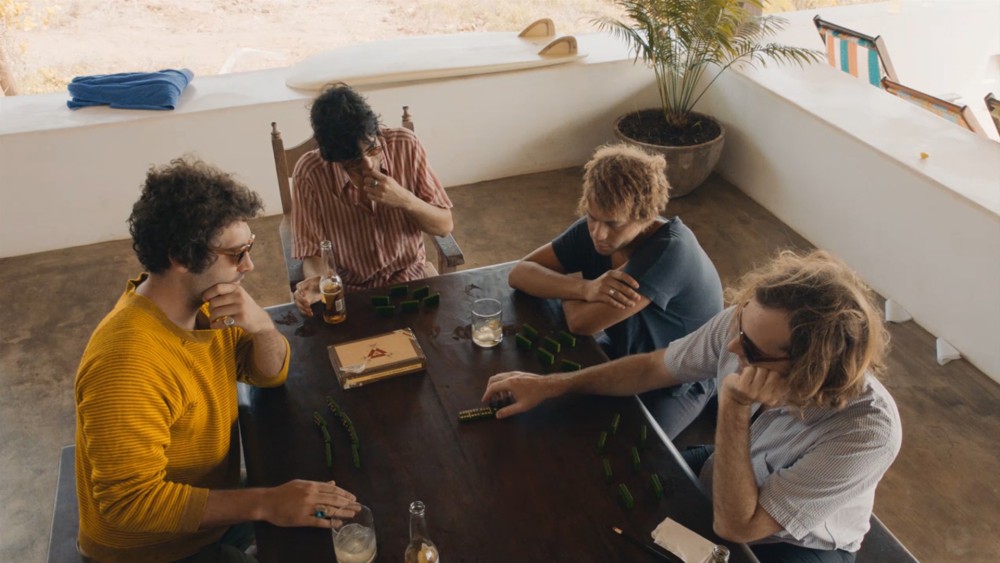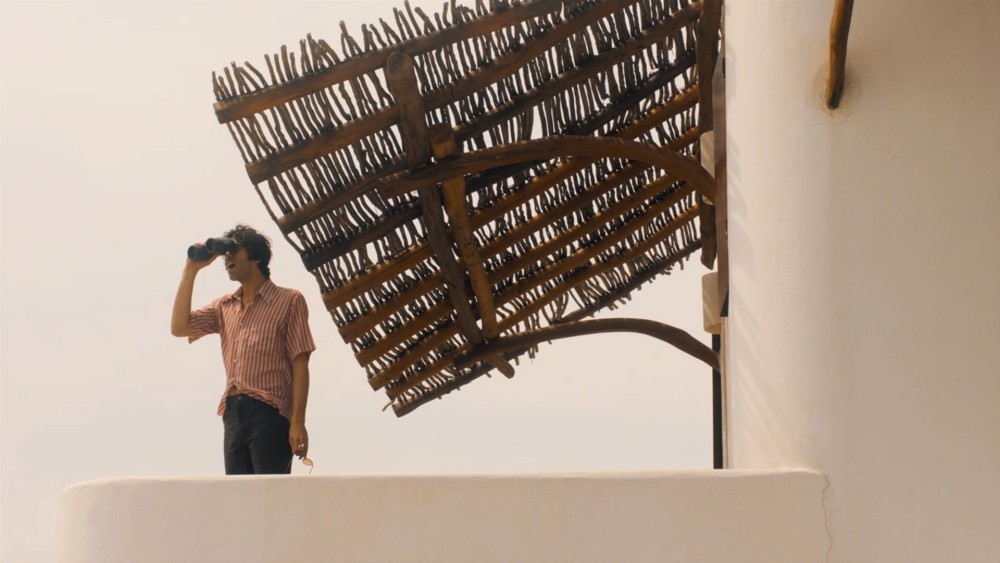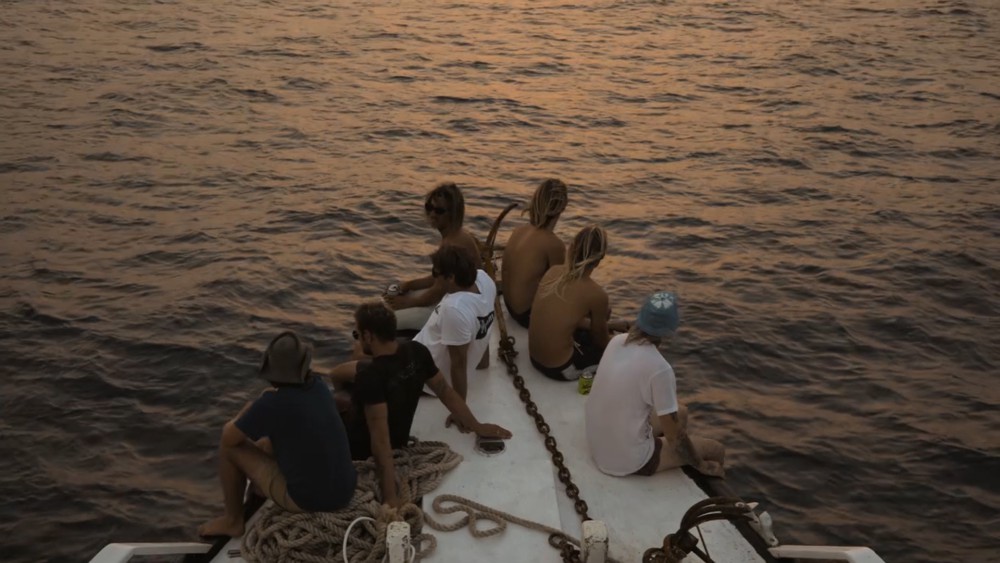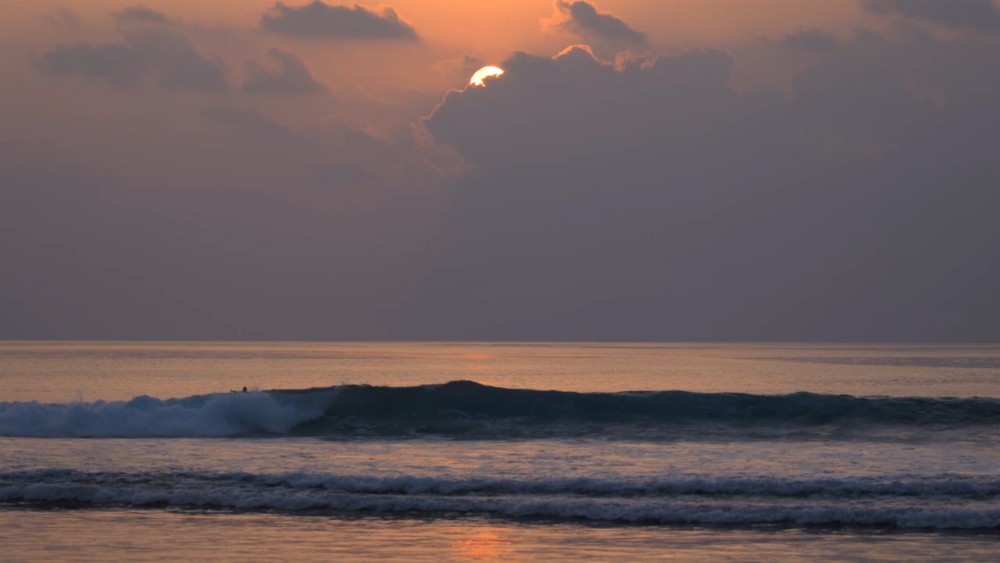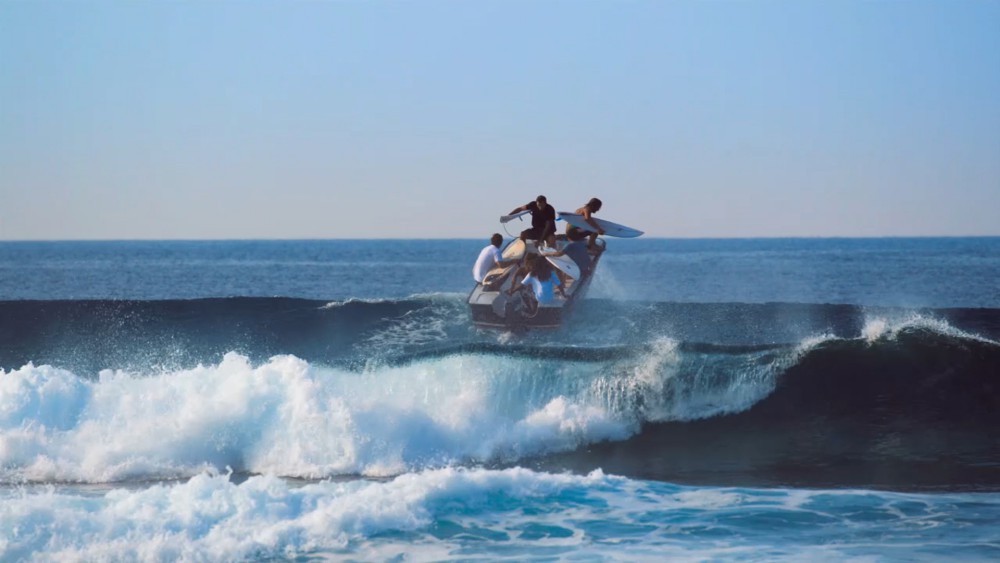Hugo Crosthwaite, La Anunciación (The Announcement), 2024
Courtesy of the artist and Luis de Jesus Los Angeles
interview by Karly Quadros
Ex-votos are a form of Mexican folk painting, part prayer, part diary, they are a dedication to the saints and a plea for guidance during difficult times. They’re sometimes crude, sometimes polished, sometimes funny, sometimes heartwrenching. Te pido perdon virgencita pues jugue con fuego (I ask you to forgive me, Virgin, because I played with fire) reads one on a painting of a woman with red skin and devil horns beckoning a man in bed while the Virgen de Guadalupe looks on. Another celebrates two luchadors who met in the ring and found love. Another thanks the Santo Niño de Atocha for surviving a late night encounter with two extraterrestrials.
Inspired by his own close encounter with death, Tijuana and San Diego-based artist Hugo Crosthwaite decided to take on the tradition of ex-votos with a new series of large-scale paintings. The show, Ex-voto, is a series of overlapping snapshots of the city of Tijuana, dense narratives of daily life at the border. Just as in the ex-votos, the physical and spiritual world mingle in scenes of border crossings, street vendors, and women at rest. The Tijuana of Crosthwaite’s paintings is not quite the real one and not quite the sin city of the American imagination. Instead, it is multilayered, a place that we tell stories about and are always returning to across the border fence.
KARLY QUADROS: Can you explain what an ex-voto painting is?
HUGO CROSTHWAITE: Ex-votos are a tradition that happen here in in Mexico and in Latin America. It's this idea of painting agradecimientos, gratitude, miracles. They're usually painted by families, by common people. They place them on church altars. Usually this happens more in the central and south of Mexico. This doesn't really happen on the border here where I live in Tijuana, so I decided that I wanted to do my version of ex-votos that reference the situation here on the border in Tijuana and San Diego. I wanted to play with the narratives that happen usually in the ex-votos where you see angel characters or saint characters involved with people, the surrealism that's behind that.
Usually when you look at the ex-votos, you're looking at miracles, sometimes with extraterrestrial things or extra-sensory things. I love seeing some ex-votos that say, “Thank God, because I saw these aliens and they tried to abduct me.” They go from very extraordinary, fantastical things to trying to escape an abusive husband or “Thanks to San Virgencita because I was able to not get caught that I had an affair with my best friend's wife.” The narratives range from fantasy to strange things to things that deal with the problems of society in terms of poverty and violence.
QUADROS: To me, they’re similar to your paintings in two ways. One is that they’re both very narrative – there are stories in your paintings that you feel like you’re dropped into. The other similarity that I see is these paintings include the physical world and the spiritual world, layered on top of each other.
CROSTHWAITE: For the longest time growing up here in Tijuana, I never really had access to culture in the [Mexican] South. It just happened after 9/11 when they closed the border and this influx of immigration happened. We started seeing culture from Oaxaca and from other places start to appear here in Tijuana because of migrants settling here, hoping to cross into the United States. For example, the Day of the Dead wasn't really celebrated here in Tijuana, but now you see that happening. So, one of the consequences of immigration that has happened with the city of Tijuana is that now we're being exposed to many of the things that usually, when I was growing up here in Tijuana, I wasn't.
Hugo Crosthwaite, Ricos Elotes (Delicious Corn), 2024
Courtesy of the artist and Luis de Jesus Los Angeles
QUADROS: Is that where all the skulls in the paintings come from?
CROSTHWAITE: Yes. Here in Tijuana we're in this area where we're not Mexican enough, but then also we're not American. It’s because Tijuana is the most northern city of Mexico, so there's a lot of cross-culturalization between San Diego and Tijuana, American culture and Mexican culture.
In my case, I was born in Tijuana and I grew up here. My family is from this area, and I don't remember learning English. It just happened naturally because my father had a curio shop where we sold Mexican items to American tourists. My life was selling stories and selling this idea of a Mexican culture that Americans wanted to see.
I've been an artist for thirty years almost, and all of my work comes from my sketchbook. I just sit in a coffee shop or I sit waiting for the bus, and I draw people. All of the narratives in all of my work comes from these sketches. I grab a lot of the faces and the environment of Tijuana. It’s not really portraiture because I’m drawing in a very clandestine way. Sometimes people think I’m doing something very suspicious, but then I show them the drawings. That’s the magic of art. Sometimes they share back. I’ve had people sing to me. I’ve had people recite poetry because they feel like you’re presenting something of art and they want to give some art back to me.
It’s not really like taking a picture or documenting something. It’s more being able to grab impressions of the city and expand these into the narratives that go into my paintings.
QUADROS: What are some of your earlier memories of art?
CROSTHWAITE: All my life I was going to school in the morning and in the evening I was working in the curio shop. I remember growing up with a lot of visual stimuli surrounding me. I would just do drawings to pass the time. It was a way of playing around while I was waiting for an American tourist to come in.
Part of what we did in the curio shop was tell stories, and that was the way of selling things. It was an American tourist expecting to hear a story as part of the interaction. In these paintings, it's also this idea of a transaction that happened, like in the original ex-votos. A miracle happened, so you're obliged to return the favor by painting this ex-voto as a way of making amends or making a payment. As a child, I would sell this notion of Mexico to an American public that was expecting certain stories, something exoticized. I feel like this series of paintings is playing with this idea that Tijuana is selling itself to the United States.
QUADROS: So in your paintings, is it the real version of Tijuana or the exoticized version?
CROSTHWAITE: It's somewhere in between because it's also playing with the fantasy. There is this notion of Mexico, especially in the city of Tijuana, because, during prohibition in the United States, Tijuana became this hub for bars. It became like a Sin City, like when you think of Las Vegas today. Tijuana was the place to come, have a drink or get divorced.
It developed this reputation, what they call La Leyenda Negra. I wanted to play with this idea of La Leyenda Negra, how Tijuana was seen as this place that's selling itself to the American tourists or what is expected by the American tourists seeing Tijuana.
For example, in the 1930s and ’40s, there were these Tijuana Bibles, which were these little pornographic books that were printed in Chicago. They were little comic books that had, like Mickey Mouse having sex with Donald Duck and that kind of thing, which were sold for five cents or whatever. This was a completely American invention, but they were called Tijuana Bibles.
Again, it's this idea that they're not from here. They're not from America. They're coming from some other place, from Tijuana, from this lawless border. Going South, there's no law and order.
QUADROS: Some classic American icons like Mickey Mouse show up in your paintings, but there’s also this idea of Americans crossing the border to deposit their own sins. I think of those big liter jugs of Coca-Cola in your paintings, in a sense, reflecting American commerce going over the border to do their dirty work that they wouldn’t do at home.
CROSTHWAITE: Yes, exactly.
QUADROS: I was thinking a lot about commerce when I was looking at your work. The characters sell tickets, they sell fruit, they talk on phones. It’s hard not to see the work in light of these recently implemented tariffs that are, once again, straining the relationship between our two countries. What roles do commerce and trade play in your work and the lives of the characters that you depict?
CROSTHWAITE: Like I mentioned earlier, Tijuana is a very touristy city. Even now the tourism in Mexico has gone beyond restaurants or shops or beer. Now even medical tourism is very important in Tijuana.
The economies between Tijuana and San Diego are extremely interconnected. In the morning, hundreds of thousands of Mexicans cross over legally to work in the United States, and you see a lot of Americans starting to live in Tijuana because housing in San Diego is becoming too expensive. There's this interconnectivity between both cities. The border serves as an obstruction to this natural flow of people and commerce and ideas and culture.
QUADROS: There’s a rich history of border art too – art that is sometimes literally on the border wall or fence, or art that is otherwise about the border. Do you see yourself in this tradition? What do you think defines border art?
CROSTHWAITE: I try not to define border art. I’m an artist, for example, that was born in Tijuana but I have American citizenship. I live in both Tijuana and San Diego. So to me, this area has always been this double identity. I grew up with this kind of schizophrenic notion. Both languages are in my head, Spanish and English. Both cultures are in my head.
When I was growing up, I would get to see all the American movies before anybody else in Mexico saw them. These films would travel to Mexico City, and then from there they would get distributed. When Star Wars came out, I saw it first in San Diego. Most of my family from further south wouldn't see it until six months later.
My work is about this double identity and the struggles. How do you identify yourself when there is this very distinct line of culture that's being placed on the border? My family settled here way before the American border was imposed, way in the 1840s. My great grandfather fought in the Mexican American War on the American side because they were conscripted by the American army. Then he settled in Rosarito, in Tijuana, and then suddenly the border came up so my family, the Crosthwaite name, which is very old here in the Californias, was suddenly divided between Mexico and the United States.
What am I Mexican or American? Those questions of identity and history and memory permeate through the work, this surreal place in between two cultures, two languages.
QUADROS: Frida Kahlo’s border painting [“Self Portrait Along the Border Line Between Mexico and the United States”] is like that too, right? She’s standing in the middle with America on one side and looking to Mexico on the other, and she’s in neither.
Hugo Crosthwaite, La Linea (The Line), 2024, Acrylic and color pencil on canvas
Courtesy of the artist and Luis de Jesus Los Angeles
CROSTHWAITE: It’s also the notion of the mestizo, the blending of the Spanish and the native.
QUADROS: And it comes back to the ex-votos, folk traditions and more pagan traditions mixing with Catholic imagery and traditions. There’s a few paintings with this imagery like “La Linea” and “The Woman Grabs the Snake.” Can you talk a little bit about Aztec imagery?
CROSTHWAITE: In “La Linea” it’s the very important figure of Coatlicue, the Aztec goddess, mother of the Aztecs. She's basically the revered mother that gave birth to Huitzilopochtli, who is the god of war. Coatlicue was later replaced by the Virgen de Guadalupe when the missionaries came and tried to sell this idea of Catholicism to the Aztec people.
Even though it's a very strong image with skulls and snakes, to the Aztec people, she represented motherhood. She represented love. She represented birth. She represented all these things that were about life.
QUADROS: It’s similar to what you were saying before where Mexico is vilified or seen as darker and more sinful, but the things that actually seem sinister, like serpents and skulls, are actually very life-affirming and beautiful. And, on the other hand, the American exports that seem very wholesome, like Coca-Cola and Disney, are actually quite insidious.
CROSTHWAITE: In this painting, you're seeing this idea of this double culture of Mexico and the United States. You're seeing images of Coatlicue on either side and in the center images of Mexican culture and American culture. You see the bottle of Diet Coke. You see Mickey Mouse. You see the cell phone. You see all these things that are an amalgam of culture on the border.
QUADROS: What was your experience like pulling together the show?
CROSTHWAITE: I've been an artist for almost thirty years, and funnily enough, all of my work was always in black and white because I never studied formally how to paint. I've always been making black and white drawings. But a couple of years ago, I was diagnosed with testicular cancer, and I went through chemotherapy. It was a very hard year and I couldn't work. So my sketchbook became the source of all my work, something that I could work on in my bed, small and not a lot of effort.
I had never contemplated doing color in my work. I decided I want to do an ambitious series, large canvases that just explode into color. As I was starting to do this, the idea of the ex-votos came about, giving thanks for regaining my health, being able to work again, being able to work big canvases. It was this gratitude that I felt towards life and towards my career and the people that supported me.
Ex-Votos is on display through April 5 at Luis de Jesus 1110 Mateo St., Los Angeles. Hugo Crosthwaite will be in conversation with Carolina Miranda at the the gallery on March 22 2-3 PM.
Hugo Crosthwaite, Tijuacolor, 2024, Acrylic and color pencil on canvas
Courtesy of the artist and Luis de Jesus Los Angeles




